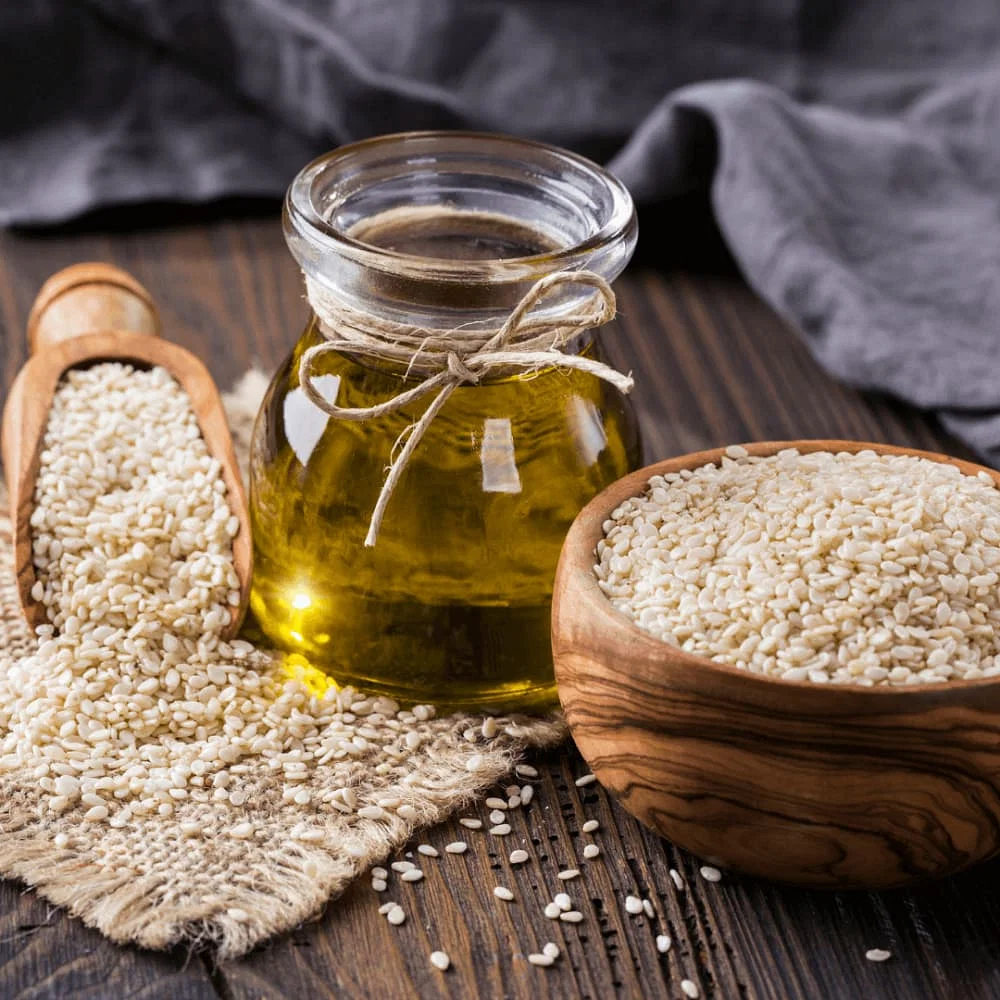| Specifications |
Details |
| Source |
Sesamum indicum (Sesame Seeds) |
| Family |
Pedaliaceae |
| Color |
Golden or Amber |
| Texture |
Viscous Liquid |
| Uses |
Culinary, Medicinal, Massage Oil |
| Composition |
Mainly Unsaturated Fats (Oleic Acid, Linoleic Acid) |
| Extraction Method |
Cold Pressed or Expeller Pressed |
| Origin |
Derived from Sesame Seeds |
| Storage |
Store in a cool, dark place |
Gingelly oil, also known as sesame oil, is a popular edible oil derived from sesame seeds (Sesamum indicum). It has a rich history and is widely used in various cuisines around the world, especially in Asian and Middle Eastern cooking.
Gingelly oil is extracted from the small, flat, and oval-shaped seeds of the sesame plant. These seeds are known for their oil-rich content and are available in different colors, including white, black, and brown.
The color of gingelly oil can range from pale yellow to dark amber, depending on the type of seeds used. Lighter varieties tend to have a milder flavor, while darker varieties have a more robust and nutty taste.
The oil has a distinctive aroma and flavor that adds a unique character to dishes. Sesame oil is a good source of healthy fats, particularly monounsaturated and polyunsaturated fats.
Additionally, sesame oil is low in saturated fats, making it a relatively healthy cooking oil option. Gingelly oil is a versatile cooking oil and is used for various culinary purposes. It is commonly used for sautéing, stir-frying, and deep-frying.
The oil's distinct flavor enhances the taste of dishes and is particularly popular in Asian cuisines, where it is often used in salad dressings, marinades, and dipping sauces. Sesame oil is believed to offer several health benefits. It contains antioxidants that may help protect the body from oxidative stress.
The oil is also known for its potential anti-inflammatory properties. Additionally, sesame oil has been traditionally used in certain cultures for its perceived benefits in promoting skin and hair health.




